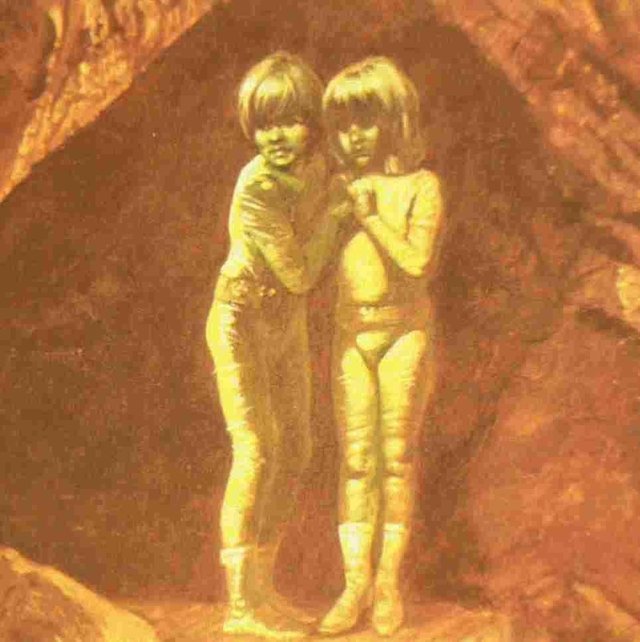Green children from Woolpit
Green-skinned children are reported to have appeared at Woolpit in Suffolk, England, around the 12th century, possibly during the reign of King Stephen. These children, men and women, generally look normal except for their green skin. They speak an unknown language, and only want to eat green beans. Finally they learn to eat other foods and the green color of their skin fades, but the boy becomes sick and dies shortly after they are baptized. The girl begins her new life, but she is considered "somewhat free and haphazard in acting." [2] After she learns to speak English, the girl explains that she and her brother are from the Land of St. Martin, the underground world whose inhabitants are green.
The somewhat contemporary notes are contained only in Ralph's Chronicum Anglicanum by Coggeshall and William's Historia Anglicarum of Newburgh, each written around 1189 and 1220. Between that time and the rediscovery of the story in the mid-19th century, green appears to have appeared only in the work of Bishop Francis Godwin, The Man in the Moone, who narrated William's note from Newburgh. [3]
Two approaches have dominated the explanation of the story of the green children: that it is a folktale that describes an imaginary encounter with the inhabitants of another world, possibly from underground or even life from outer space, or it is a distorted historical event. The story is recognized as an ideal fantasy story by anarchist poet and critic Herbert Read in the English Prose Style of his work, published in 1931. The story inspires in his only novel, The Green Child, written in 1934.Green-skinned children are reported to have appeared at Woolpit in Suffolk, England, around the 12th century, possibly during the reign of King Stephen. These children, men and women, generally look normal except for their green skin. They speak an unknown language, and only want to eat green beans. Finally they learn to eat other foods and the green color of their skin fades, but the boy becomes sick and dies shortly after they are baptized. The girl begins her new life, but she is considered "somewhat free and haphazard in acting." [2] After she learns to speak English, the girl explains that she and her brother are from the Land of St. Martin, the underground world whose inhabitants are green.
The somewhat contemporary notes are contained only in Ralph's Chronicum Anglicanum by Coggeshall and William's Historia Anglicarum of Newburgh, each written around 1189 and 1220. Between that time and the rediscovery of the story in the mid-19th century, green appears to have appeared only in the work of Bishop Francis Godwin, The Man in the Moone, who narrated William's note from Newburgh. [3]
Two approaches have dominated the explanation of the story of the green children: that it is a folktale that describes an imaginary encounter with the inhabitants of another world, possibly from underground or even life from outer space, or it is a distorted historical event. The story is recognized as an ideal fantasy story by anarchist poet and critic Herbert Read in the English Prose Style of his work, published in 1931. The story inspires in his only novel, The Green Child, written in 1934. 